The Moon at 9 Days Old
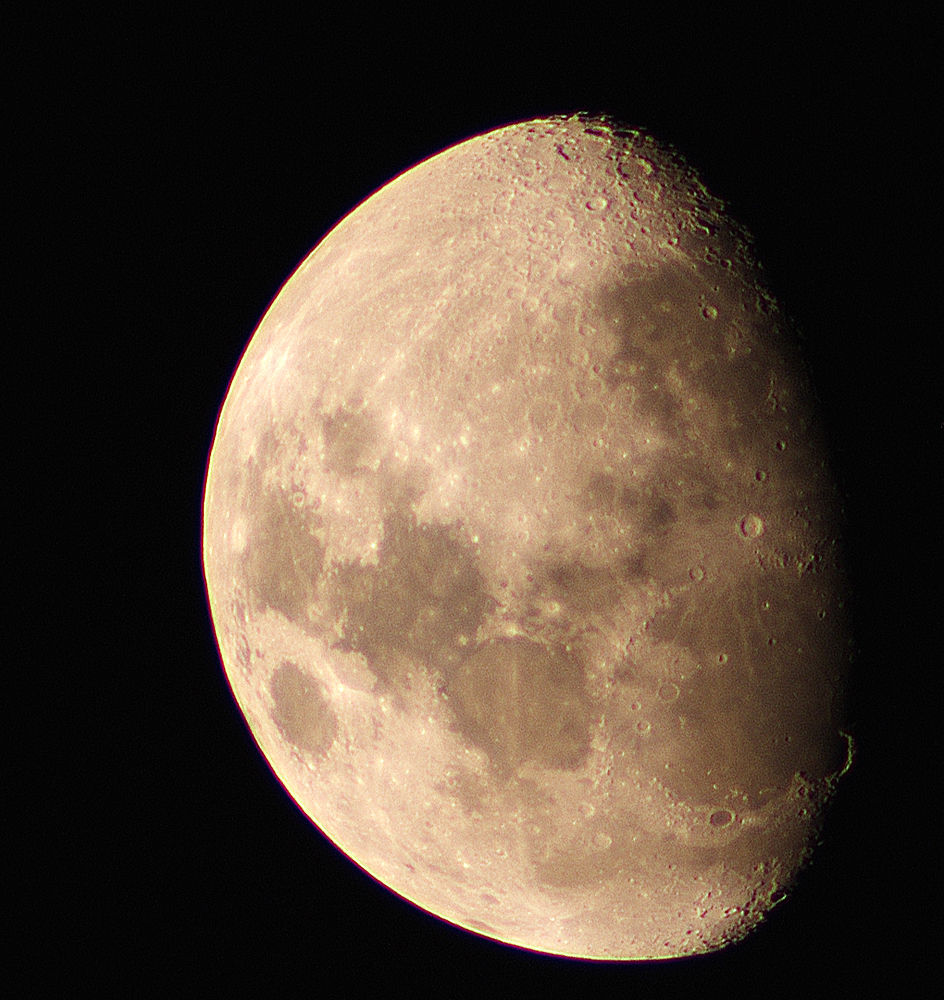
Combination of 10, 0.005 second images. Modified Canon Digital Rebel DSLR camera.
5" f/5 refractor at prime focus.
The 9 day old moon. By this time the sun has risen more over Copernicus , allowing a much better view of the terraced walls. In the north, close to the crater Plato , the unusual feature, the Straight Range, is now visible, along with several isolated mountains protruding above the lava plains that are Mare Imbrium . South of Copernicus, Pitatus stands out while the rays of Tycho are beginning to become prominent. This time is also the best for seeing the Straight Wall .
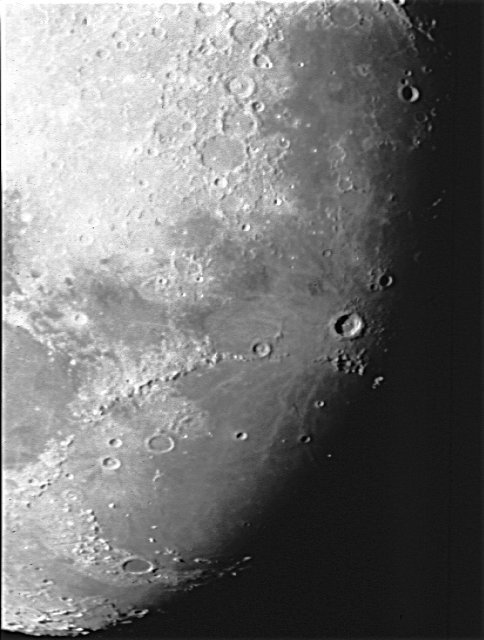
1/250 second exposure, Fuji Provia 400 slide film.
300mm f/6 newtonian telescope at prime focus.
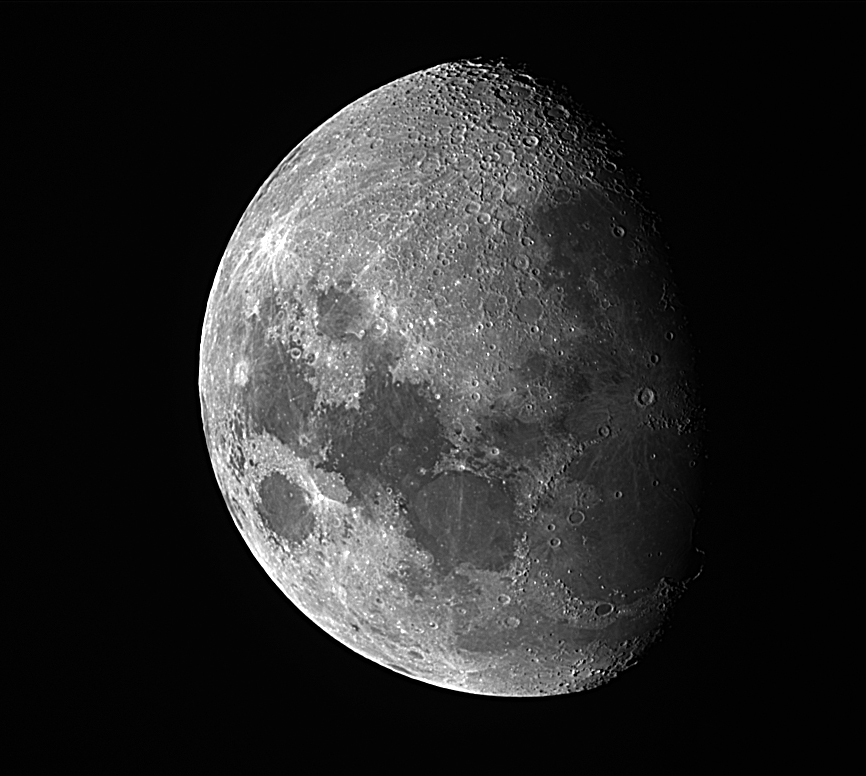
Combination of 20, 0.02 second images.
SBIG ST-8XE CCD. 5" f/5 refractor at prime focus.
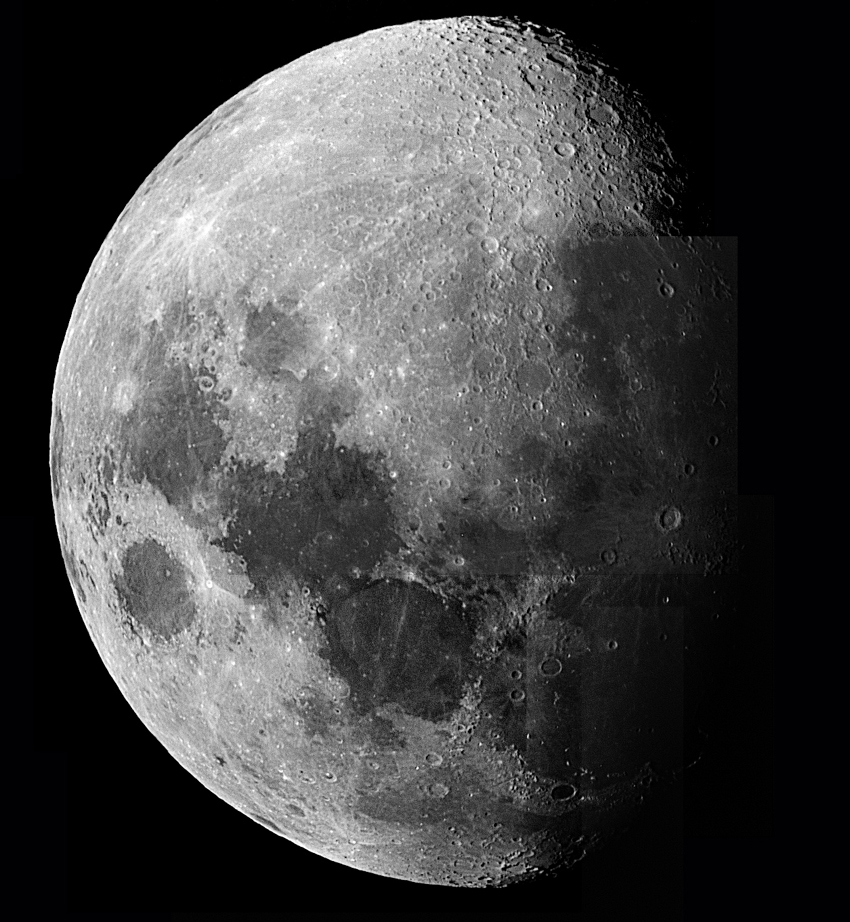
This mosiac was assembled from 10 images, each 5 milliseconds exposure, using a Meade 416xt CCD.
8" f/6 newtonian telescope at prime focus.
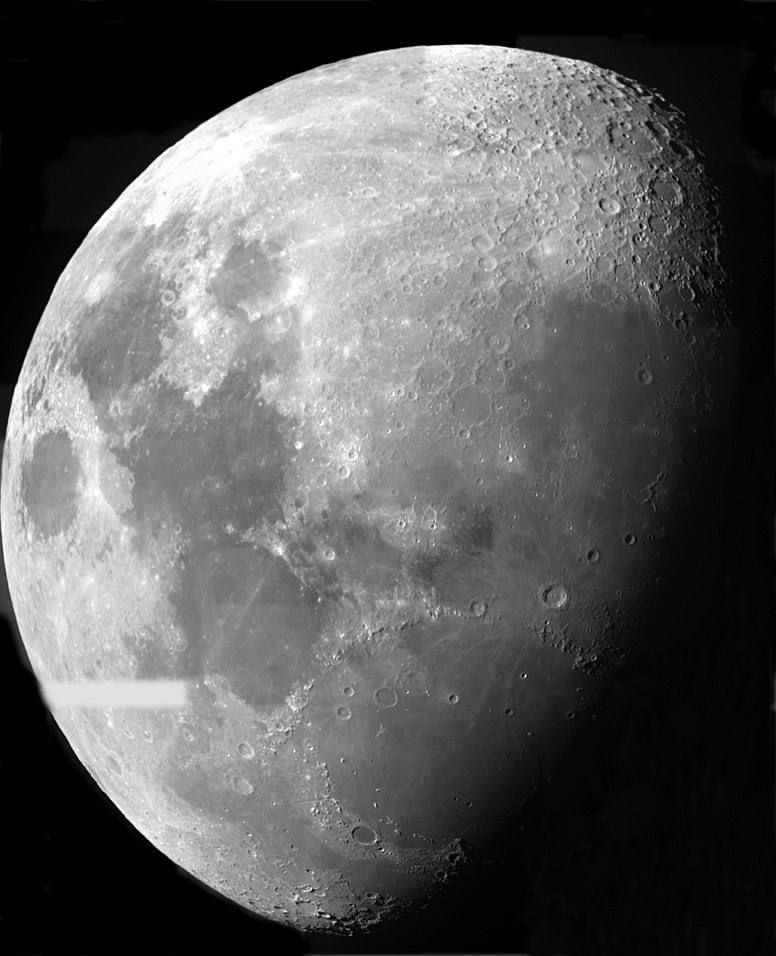
This mosiac was assembled from more than 20 images.
Each image 0.002 seconds exposure, using an SBIG ST-8XE CCD and an H-alpha filter.
16" f/10 schmidt-cassegrain at prime focus.
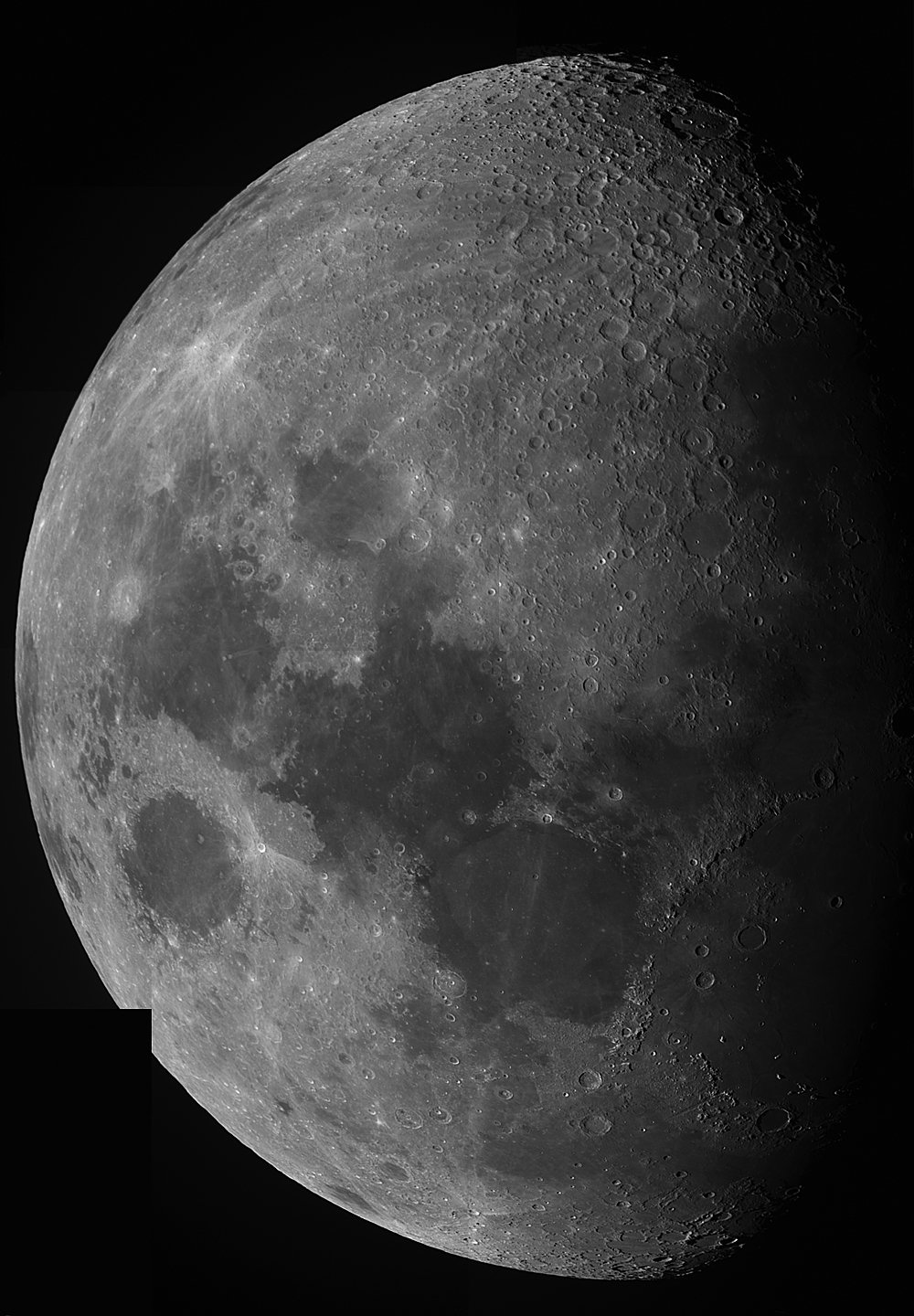
Mosiac made from 13 images, each a combination of 20, 0.02 second exposures.
SBIG ST-8XE CCD. 20" f/6.8 Dall-Kirkham cassegrain telescope at prime focus.
This is a reduced version of the image. For a full-sized version click here.. The small "bite" is where I missed a small section is making the mosiac. :-(
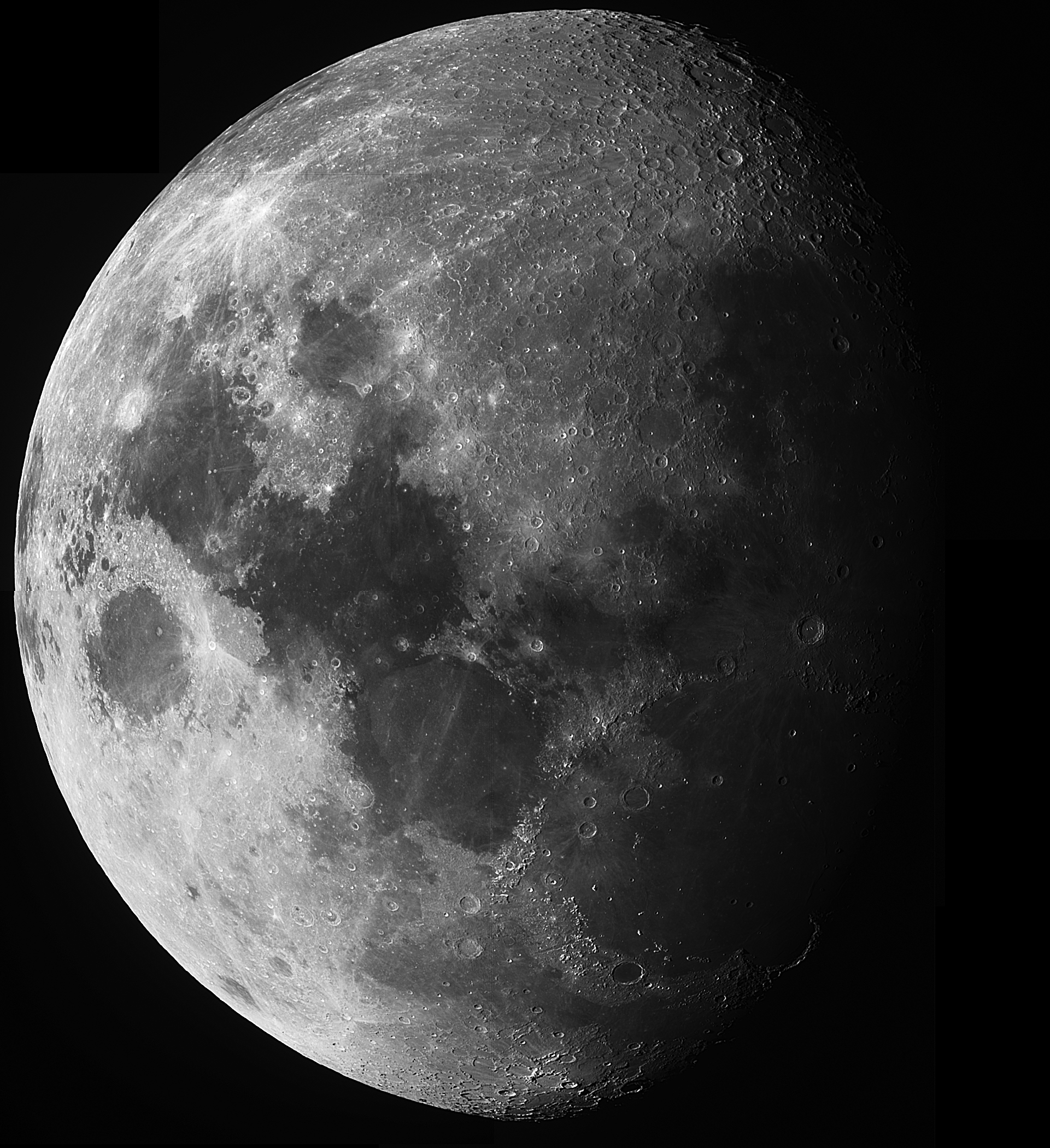
Mosiac composed from 120, 0.02 second imagins using an H-alpha filter.
SBIG STL-1001E CCD. 300mm f/18 cassegrain telescope at prime focus.
Between first quarter and about 10 days, the Moon is at its best. So many interesting features are displayed in dramatic relief.
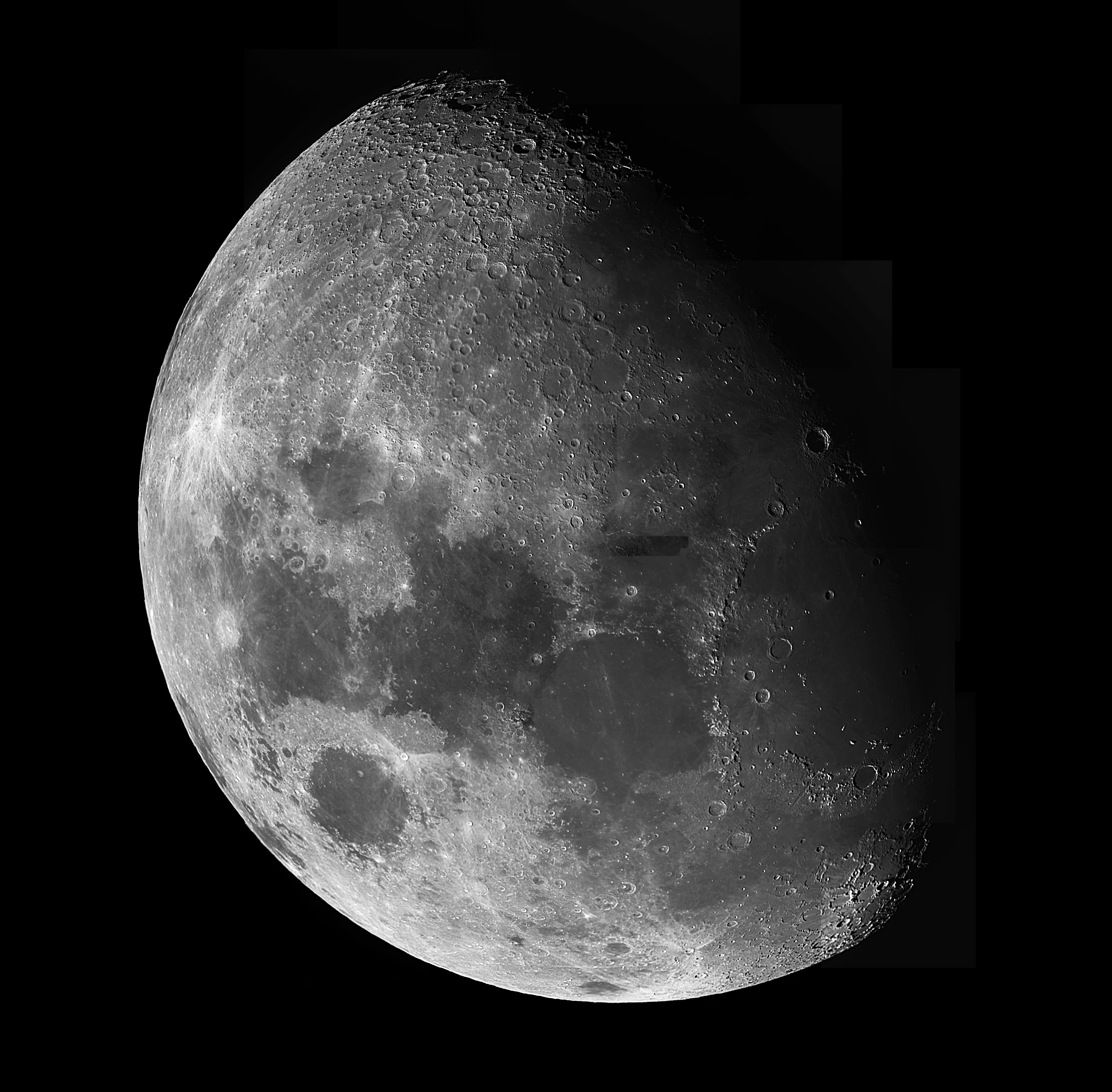
Mosiac composed from 160, 0.02 second imagins using an H-alpha filter.
SBIG STL-1001E CCD. 300mm f/18 cassegrain telescope at prime focus.








